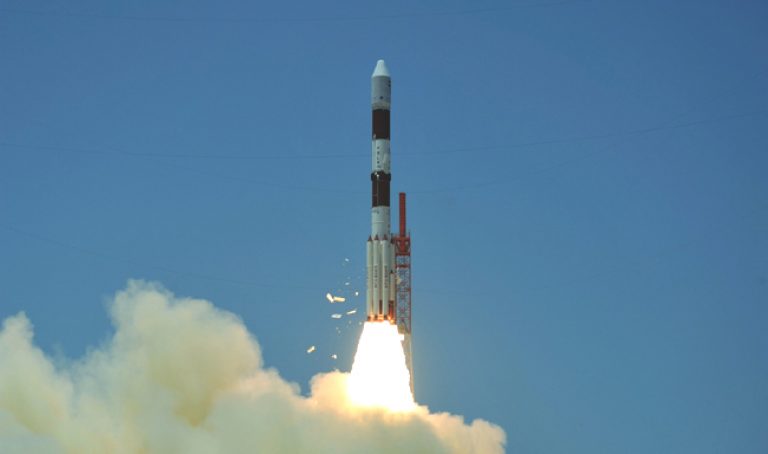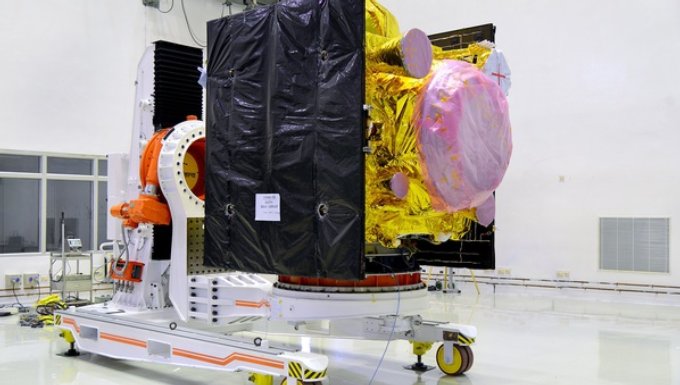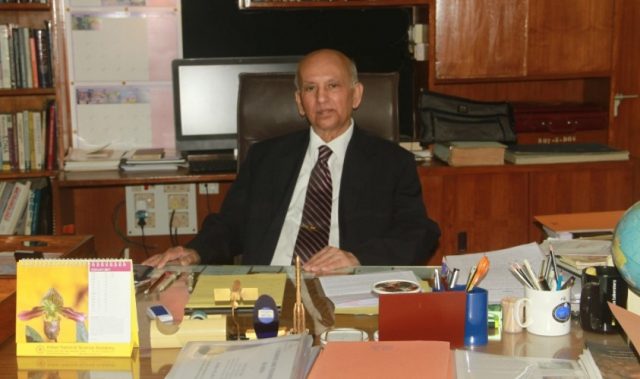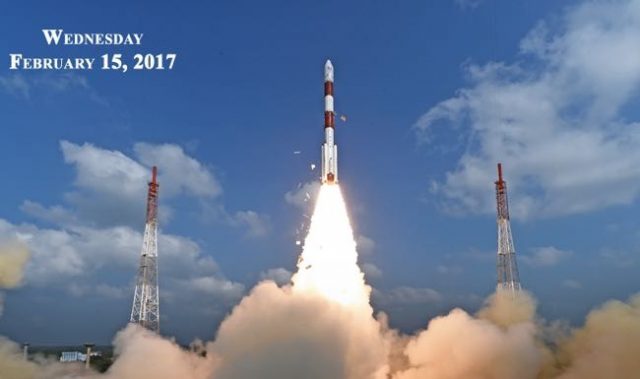
AsianScientist (Dec. 24, 2014) – The Indian Space Research Organisation (ISRO) launched the first test flight of its newest rocket—the GSLV Mk.III—on December 18, conducting a suborbital flight that also demonstrated a prototype crew capsule (CARE) for India’s proposed manned missions. Liftoff from the Satish Dhawan Space Center occurred at 09:30 local time (04:00 UTC).
The GSLV Mk.III rocket is a completely new vehicle marking the third generation for India’s orbital launch systems. The two-stage rocket is designed to place around 10 tonnes (9.8 Imperial tons, 11 US tons) of payload into low earth orbit or four tonnes (3.9 Imperial tons, 4.4 US tons) to a geosynchronous transfer orbit.
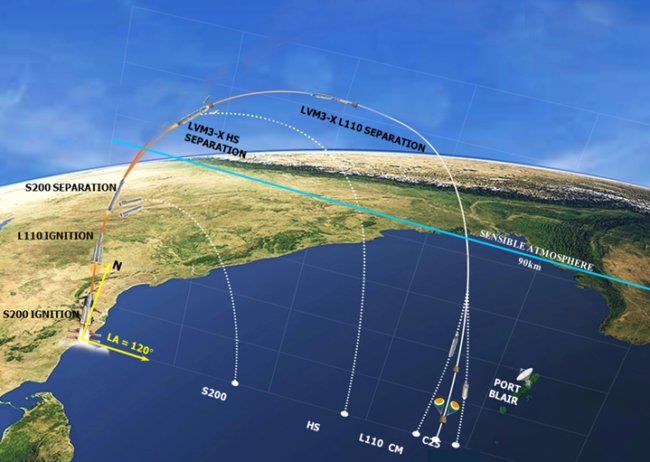
The first stage, or L110, is powered by two Vikas engines, derived from France’s Viking series used on Ariane rockets between 1979 and 2004. Burning unsymmetrical dimethylhydrazine (UDMH) propellant oxidised by dinitrogen tetroxide (N2O4), the L110 will be air-lit almost two minutes after the rocket lifts off under the power of its two booster rockets.
The rocket’s second stage, which was not tested on Thursday’s mission, is designated the C25. It was powered by a CE20 engine burning liquid hydrogen and liquid oxygen; however for the maiden flight the second stage was inert, loaded with liquid nitrogen to simulate propellant.
The payload for Thursday’s maiden launch was the Crew Module Atmospheric Reentry Experiment (CARE), which demonstrated the crew capsule which ISRO has been developing for its manned program. The primary objective of CARE’s mission was to validate the reentry and recovery of the prototype spacecraft.
The 3,735 kg spacecraft flew without the service module that will eventually accompany it on manned missions; instead it was attached to the second stage of its carrier rocket upside-down, inside the payload fairing.
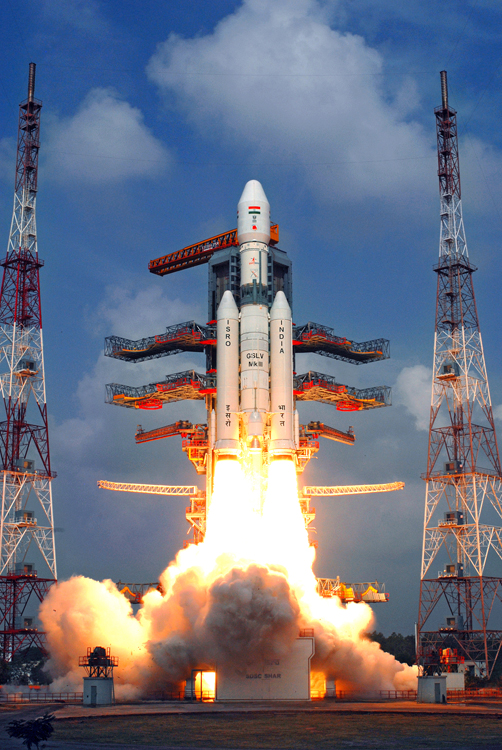
By launching upside-down, ISRO’s aim was to simplify the CARE mission and increase the chances of success; eliminating the risk of having to modify the capsule’s heat shield to interface with the rocket and removing the need for the spacecraft to maneuver to reentry attitude following launch.
Immediately after separating from the rocket, CARE activated its control systems, consisting of six reaction control system thrusters each capable of delivering 100 newtons of thrust. Following entry interface, deployment of CARE’s drogue parachutes occurred nine minutes and 40 seconds into the mission, at an altitude of 15.4 kilometres. The drogue chutes slowed the capsule as it continued its descent, until the main parachutes were deployed around 202 seconds later with the spacecraft three kilometres above the Indian Ocean.
Splashdown occurred around 180 kilometres south of the Andaman and Nicobar Islands, where CARE has since be recovered by the Indian Coast Guard. In all, the mission lasted nineteen minutes from liftoff to splashdown.
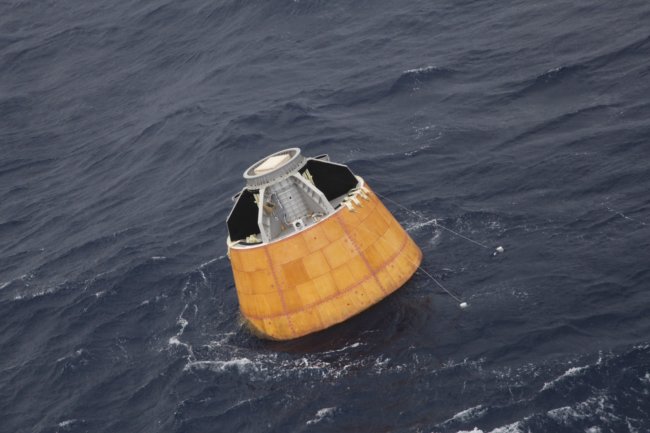
Thursday’s mission concluded ISRO’s launch activities for 2014, following four successful orbital launches earlier in the year. The Geosynchronous Satellite Launch Vehicle began the year on January 5 with the deployment of GSAT-14—the first successful launch of the GSLV Mk.II and the first for any GSLV configuration since 2004, ending a string of four consecutive launch failures.
PSLV launches in April and October deployed Indian Regional Navigation Satellite System (IRNSS) satellites, while a further PSLV launch in June orbited France’s SPOT-7 imaging satellite along with several miniature satellites.
India’s first launch next year will be of a PSLV-XL with another IRNSS spacecraft. This will be the first of several IRNSS launches in 2015, with missions to deploy a trio of British imaging satellites and ISRO’s AstroSat astronomy spacecraft also tentatively planned.
The GSLV Mk.III is not expected to fly again until 2016 or early 2017, when the rocket will make its first orbital flight—designated D1—with the GSAT-19E spacecraft.
———-
Source: NASA Spaceflight; Photo: ISRO.
Disclaimer: This article does not necessarily reflect the views of AsianScientist or its staff.




